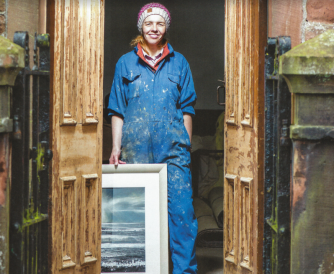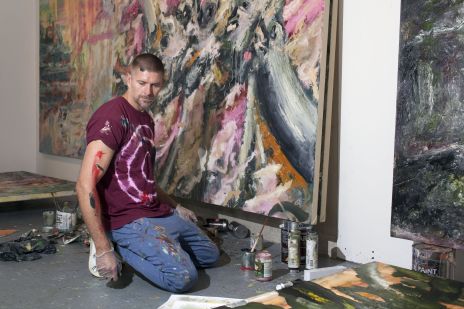Helen Fryer
Born and brought up in Cumbria, Helen left the county at the age of 18 to study Geography at Manchester University. After years living in and exploring various parts of the UK she has now returned, and has a studio in Fletchertown, the village in which she grew up.
The land sandwiched between the Solway and the 'Back 'o' Skiddaw' is one she she knows intimately and has been hugely influential in her work, despite initially being better known for her depictions of the west coast of Scotland.
Her landscapes are highly evocative, full of atmosphere and alive with movement. They are usually unpeopled, depicting those wild, remote places which she loves to explore. Helen has spent many hours walking, sailing, cycling and cross country skiing in all weathers. She has climbed all 284 Scottish Munros (mountains over 3000 feet) and has sailed extensively off the west coast of Scotland, all the while observing and experiencing the best and worst of British weather, which she is not afraid to express in her work.
Her language of mark making is distinctive and self taught. Initially, she works in rapid, sweeping, almost frantic movements, using her hands to apply the chalk pastel and acrylic ink. A basic image emerges very quickly, but the pace then slows and her technique becomes more considered, until the piece is compositionally and tonally balanced. The resulting work has been exhibited widely in the UK.
Beth Richardson
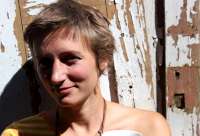
"I paint ordinary, everyday objects in large empty spaces and explore
the strangely human characteristics the objects reveal both alone and in
relation to each other. 2019 has seen a larger scale painting in which
the colour fields become experiential.
Compositions are often ambiguous as perspectives are skewed, horizons
become tables and domestic interiors merge with the wild natural world.
As our perspective is challenged we are tempted to forget what we know
and respond to the ordinary in a new way."
Beth is an international selling artist showing in some of the most significant galleries and shows within the art world, these include New York, Melbourne, Amsterdam, Hong Kong, Milan and London, her works can be found in some incredible collections.
Ian Rayer Smith
In a world preoccupied with technology, there is something remarkable about painting. It connects us back to man’s earliest and most elemental forms of self expression.
I am not interested in painting something that already exists. My pressing urge is to use paint to explore new forms which will ultimately carry emotional weight. I try not to recreate an image. Instead, I may use it as a reference point by which to move from one painting to the next.
I am influenced by the Abstract Expressionists - for their emotional rawness and mark making, and also by the Renaissance - for composition, light and movement. Onto these I layer influences from contemporary culture and my own personal experience. I aim to instil a classical feel into my work whilst finding new visual paths, with the result hopefully being an exploration of the purpose of painting itself.
I think of my paintings as posing a series of questions rather than providing overt statements or narrative pointers towards any clear kind of answer. There would be no joy or satisfaction in doing that. Instead, the process is more about showing my search for something which, maybe, I hope I’ll never find.
Ian Norris
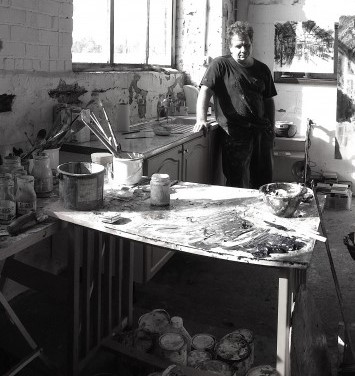
‘Ian relies on his own intuitive responses to the world around him, whether that response be to a landscape, a coastline, a cityscape or indeed recently, the interior of his studio. Whatever the subject, although perhaps stimulus would perhaps be more appropriate, the physical manifestation of the visual experience through the act of painting is, for Ian, the means of transmitting and sharing the same feeling and experience with the viewer. As a result, the contrast between the internalisation of a once private memory and the external public rendering of its emotional response is at the heart of Ian’s challenge and the honesty of its portrayal underscores his artistic integrity.
Ian’s methodology and processes further illuminate his own essential truths and it is this incumbent sense of a willingness and determination to embrace the experimental, and by immersion in this approach thereby potentially expose himself to the risk of non-fulfilment, which drives the vitality of his work. From the initial mark making onwards, Ian is an artist who categorically rejects the use of photography as a form of aide-memoire, preferring, or insisting would perhaps be more apt, to rely upon his own memory, instinct and drawings for reference points.’
‘In seeking to convey this sense of remembered place, and in striving for fluidity and naturalness, Ian Norris submits both himself and his art to the severest of demands as the physical scraping back of the paint is both an emotional and painstaking undertaking. Such a preference for working from memory best demands its expression in the medium of oil paint, its malleable qualities proving resilient and pliable for the reworking of Ian’s vision. As such, Ian’s current artistic practice can be classified as organic given the intrinsic importance to him of the remodelling of remembered sensations and their expression in paint.’ John Hadfield
Colin Halliday
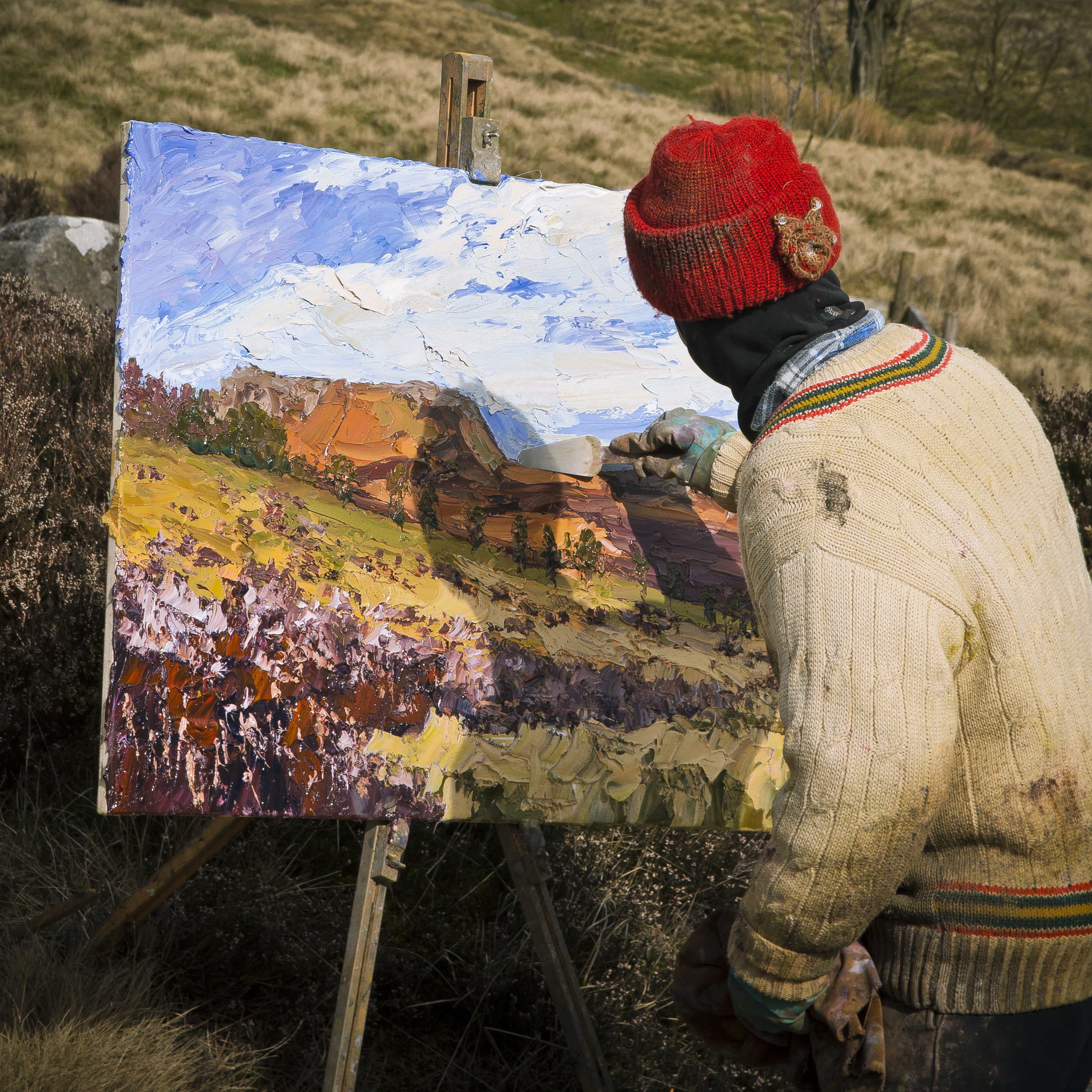
Colin was born in Carlisle in 1964 and after completeing his foundation course in Fine Art there he set off to finish at Exeter.
"I paint landscapes because that is what I most relate to, my working method is very bold and expressive as I want a painting to look like a painting and not get bogged down with detail."
A painterley application is a very important aspect of Colins workas this he feels reflects the subject mater best and the importance of individual marks, application is not hidden and this he feels celebrates the individual. He choose's many subjects which could be anywhere in England sometimes intimate spaces and sometimes a larger landscape view. It is by concentrating on expressive application the painting becomes more object like and not so determined by illusion this is after all a painting and not the actual landscape.
Dean Entwistle
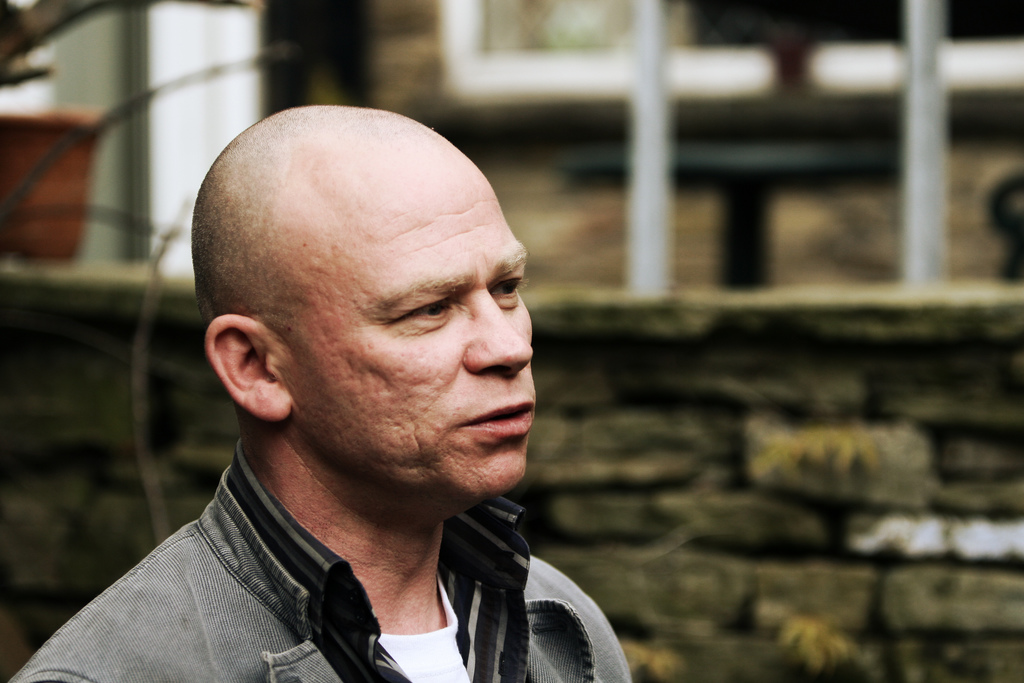
Dean Entwistle is a British painter whose desire is to create something of beauty.
He endeavours to reflect and translate feelings and emotions through the subtle and responsive medium of watercolour, oil and tempera.
Dean produces around twevle paintings a year. The investment potential of both his original works and limited edition prints has become evident for some years now as they become incresingly sought after by collectors.
Dean's work regularly hangs alongside artists such as John Bellany CBE RA, Maurice Cockrill RA, LS Lowry RA, Theodore Major, Harold Riley, John Piper CH, Barbara Rae RA, Peter Howson OBE, Adolphe Valetti, Graham Sutherland OM and Emanual Levy.
Russell Howarth

Russell Howarth was born in Oldham in 1927 and has lived in the same house since 1937. He has exhibited at the Royal Society of British Artists and has had numerous solo exhibitions.
Russell paints in oils, using muted earth tones, that perfectly depict the beautiful scenes around Saddleworth, for each and every painting Russell paints he first makes a detailed pencil drawing. His paintings record the changing environment of the moors over the last 60 years.
Russell can recognise exactly the area in which each picture was painted. Russell will be 91 soon and shows no sign of slowing.
I have had the enormous pleasure of being invited to Russell's house to look through his private collection to select for the gallery. He shared some wine that he had made himself, it was glorious. I felt incredibly humbled and honoured.
Jessica Owen
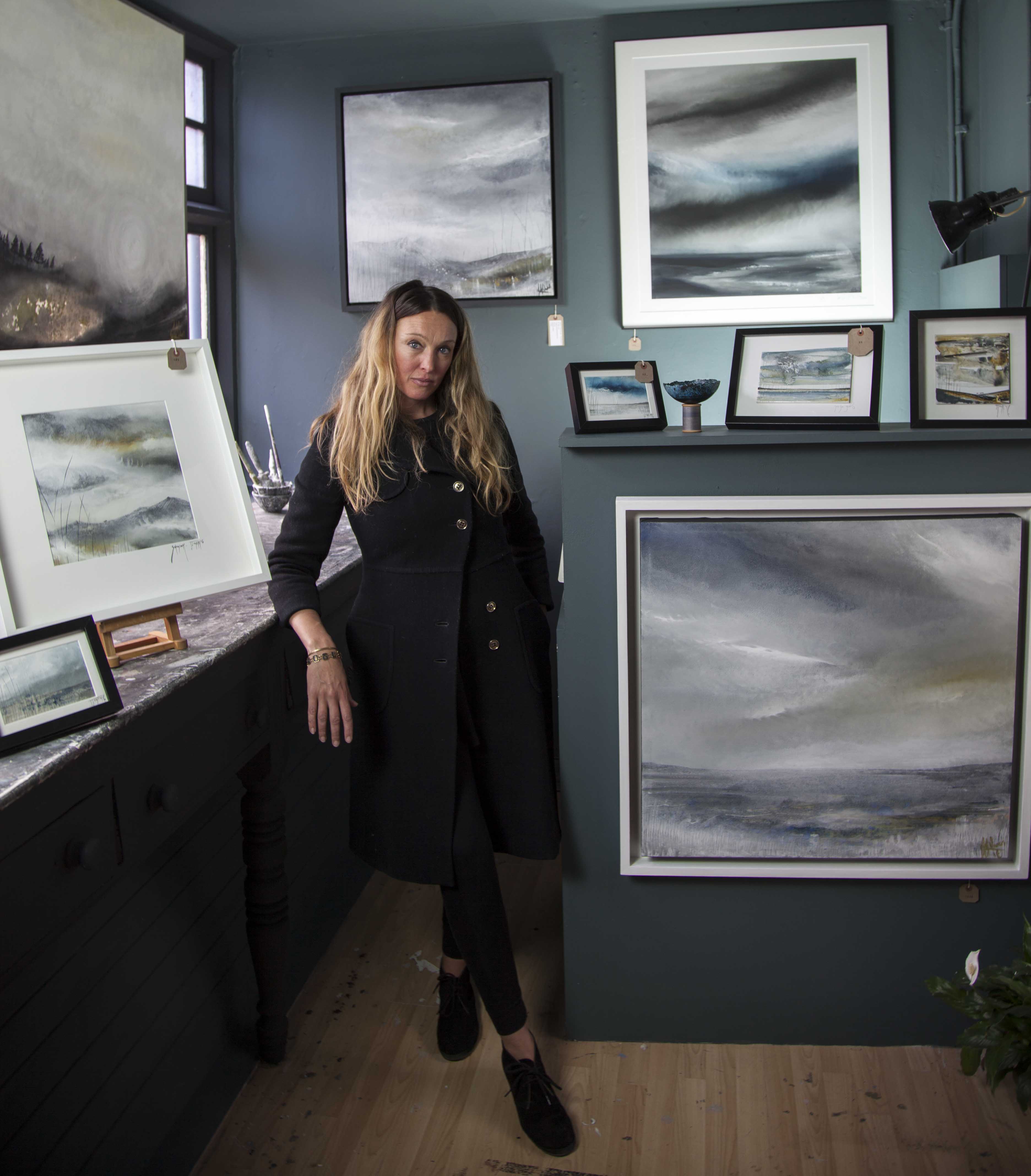
Big brooding skies with a strong concentration of light and dark are a trademark of Jessica. She uses a wide array of paint mediums from sprays, enamel to oil. Paint is applied by hand, brush and knife. Freedom of expression holds no bounds.
The last 13 years has seen Jessica painting professionally from her Manchester studio. In that time she has sold prolifically and has been commissioned by many notable collectors. Jessica is a widely exhibited artist and her works hang worldwide.
Jessica lost her father at the age of sixteen; life was never to be the same again. Her life whilst her father was alive was heading towards an academic end to which her father, her inspiration and motivator guided her. His passing changed that direction towards the path she leads today. Painting is her meditation, as she works with every ounce of emotion that fills her. She never plans the painting she simply lets it evolve from one to another. The work doesn’t come from a sad place however, more a celebration of uncontrollable events that fill each and everyone one of us and that are constructed in her medium of choice, that of paint on canvas. These are her landscapes, her seascapes, for your escape.
Rosemary Vanns
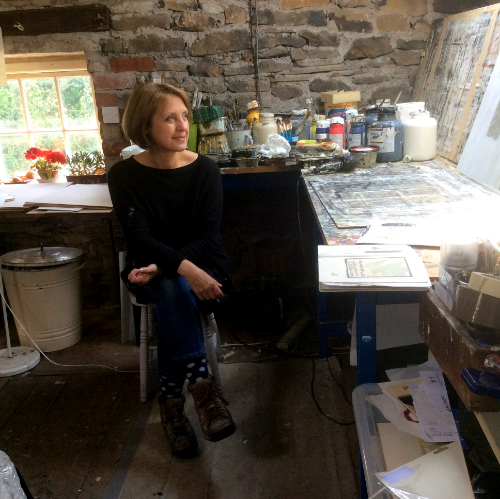
Rosemary was born in Nottinghamshire in 1960 and originally trained and qualified as a registered nurse in Sheffield. A year into further midwifery training in Harlow, Essex in 1983 she gave up her studies to undertake an art's foundation course and then went on to gain a B.A (Hons) degree in Textile and Fashion Design at Winchester School of Art (1984-1987). In both 1988 and 1989 she was awarded places at the Royal College of Art in Londonto study for an M.A. in fine art printmaking but the birth of her daughter and then her son in those years meant she was unable to attend.
She spent the next 20 years initially as a successful freelance textile designer for the international bedding and furnishings market creating designs for, amongst others, Sanderson, John Lewis, Jeff Banks and Vymura and numerous print and weave companies across the world. For the later 6 years she returned to work as a surgical staff nurse in Sheffield and then as a district nurse and her local hospice. Her art making continued spasmodically during this period including a couple of minor awards but it was not until 2009 that she was able to commit herself to life as a full time artist.
Printmaking she feels has been instinctively her focus (she won the Printmakers' printamker award at printfest in Cumbria in 2013) but painting has recently become an inspirational and important part of her work. Mark making and colour continue to predominate in both disciplines and her love iof still life is depicted in either semi abstracted or in more illustrative form. Her work has been described as, 'a mixture of still life and landscape pieces that have a beautiful abstract fluidity and movement with warm, earthy palette'.
Rosemary prepares and prints all her own small edition screenprints in her studio overlooking the dramatic landscape of the Derbyshire Peak District.
D K Goodwin

David works out of his studio in Manchester; early on in his career he took a year out from his day job to focus on his dream, which was to 'paint every day'. After getting together with neighbours at his home in Chorlton, Manchester to create 'Art in the garden' he realised that his dream could become a reality and set out to become a professional artist.
His works, which are produced in vibrant oils are inspired by nature, be it walking the coastline of the UK or in the timeless hills of the North of England. Back in his eclectic studio, the excitement of the elements are recalled and transferred in a very personal way onto canvas to produce images that are true to himself and the ambience he portrays.
Tess Armitage
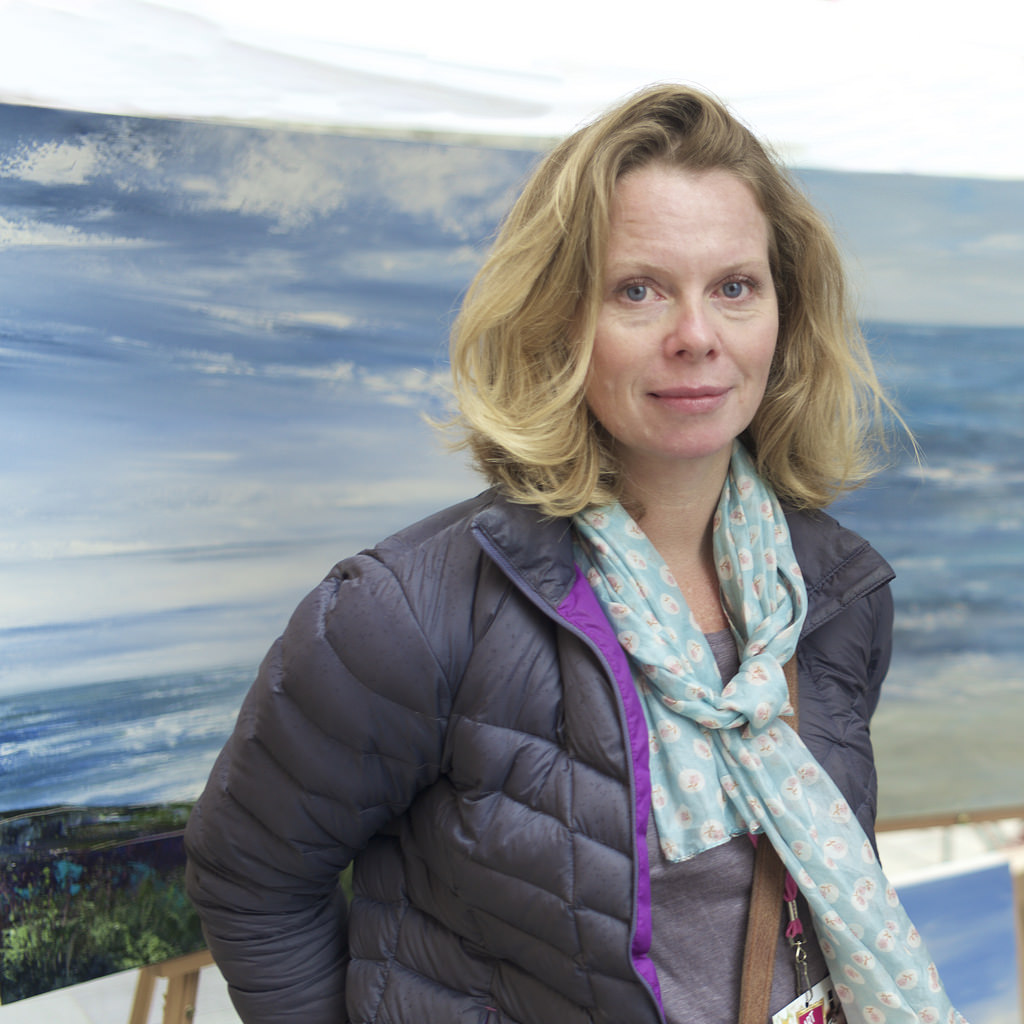
Tess studied Textile Design in Nottingham gaining a BA (Hons) in 1991. She taught Art and Design until 1998, when she started painting on a full-time basis using her experiences in Africa and Nepal as inspiration for her work.
Tess began to sell her work professionally in the late 1990's working as an Artist-in-Residence in a Manchester gallery. Here her work was mainly commissioned by large corporate companies and was sold through out the UK and abroad.
Lilly Greenwood
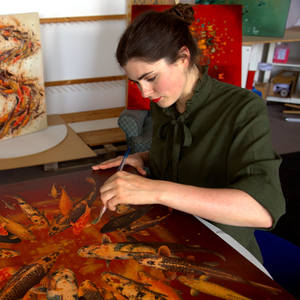
Lilly's interest in the natural world began from an early age, growing up in rural Cumbria. Creating glorified representations of nature, subject matter initially chosen as a vehicle to play with colour. Her work is also influenced by eighteenth century printmakers such as Hokusai and Hiroshige, with their strong yet never garish colour palettes, and the beautiful patterns employed in Japanese kimono design.
Lilly is interested in finding out what it takes to create an appealing aesthetic - how to create a 'flow' and an energy. For her this involves striking a balance between presence and absence, dark and light, one colour next to another, symmetry and asymmetry, adding and taking away until something is 'right'.
A tenant at Manchester Craft and Design Centre for nine years, she now work from her home studio in the Cumbrian countryside. Her trademark technique, developed over a number of years, is to use reproductions of her own paintings as collage material on the canvas. Lilly continuously adds to her own library of 'source' paintings, which are then reproduced and cut out ready to create a finished piece. The canvas backgrounds are painted with acrylics. When the collage has been secured in place, she use's washes of inks, then may apply additional painted or drawn details. Finally a clear gloss varnish is applied, securing the collage, adding an opulent lustre, and bringing out the depth of colour.
Lilly has exhibited widely in the UK over the past decade, and exhibited and sold work internationally, with shows in Barcelona and Amsterdam. Original canvases and prints have traveled to collectors worldwide, including the USA, South America, and South Africa. In 2013 Lilly was shortlisted for the New Lights Art Prize, which supports emerging young artists in the North of England. In January 2016, Saatchi Art featured my work in their 'One to Watch' artist series.
Susan Kane
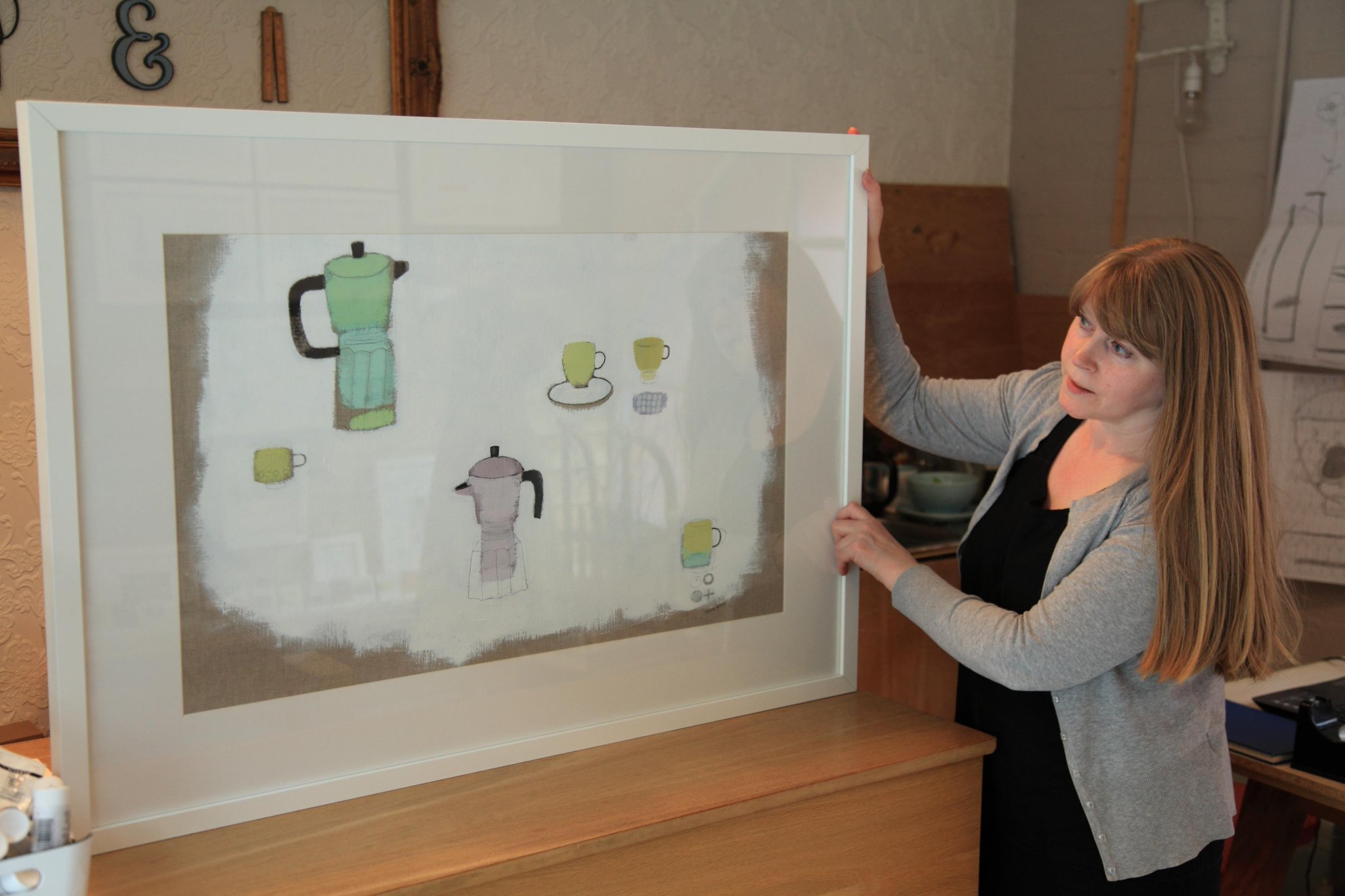
Susan Kane studied Printed Textile Design at Manchester Polytechnic in the 1980's and received a First Class BA(Hons). Following this she worked in London for various design studios, including 3 years with Mary Quant, designing her ranges in the UK and Japan. Over the following 20 years she has worked in partnership with other designers, selling work in the UK, New York, LA and Tokyo.
"From an early age it was clear to me that art and design were to be my future- always drawn to colour, form and fashion, always painting and drawing. I have a vivid memory from the age of 8, of seeing Paul Klee prints, 'Senecio' and 'Sinbad the Sailor', whilst at the house of an artist friend of my parents.
In recent years I made the transition from textile design to painting, which was my first love. Currently I enjoy painting plants and flowers and mid-century vessels. I work predominantly in watercolour, acrylics and monoprint either on paper or cotton/linen. I try to bring a freshness and spontaneity to my subject matter."
Susan Kane debuted successfully in our 2016 Christmas exhibition and now has her first show with us in June 2017.
Tim Copsey
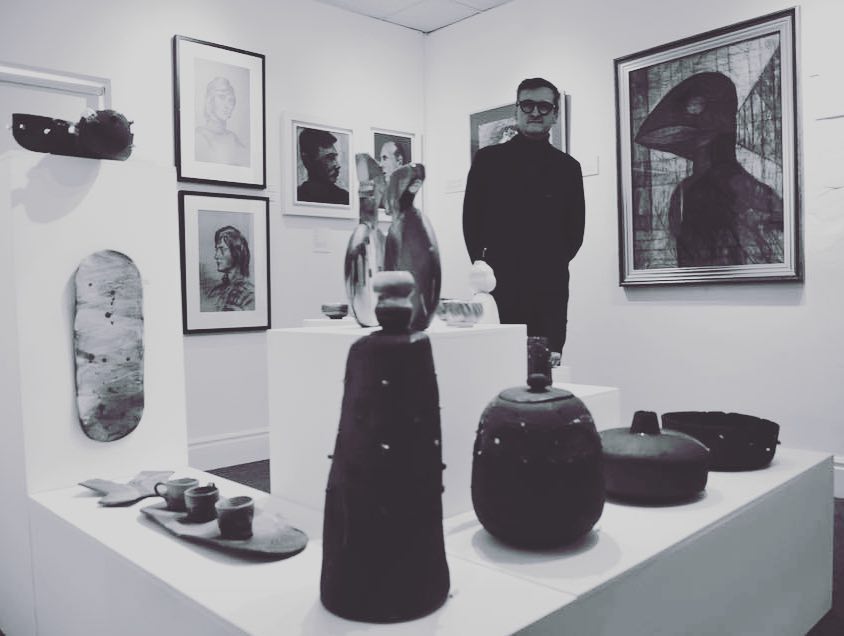
When Tim considers the technical pitfalls between mud and fire, it's a miracle thats pots ever get made, but they do and have been for millennia.
When, after 25 years Tim re-engaged with pottery the immediacy and muscle recognition was emotional and unexpected; and rather than picking up from a (possibly) juvenile obsession with perfection; of trying to encompass every possibility, to know everything, he embraced these pitfalls, the variables and mistakes. God knows there are many.
For a start there's the clay, it's texture, thickness and drying; there's the colour, slip and glaze; and finally the firing process - his pots are wood-fired ina self build kilm - 3 days of stoking, teasing the air flow and roaring flame, then 48 hours of unknowing while it cools.
There are often cracks and disappointments... Kintsugi (mending pots with gold) is a Japanese way of making the broken beautiful, of elevating a simple beloved piece, of clawing back a sense of beauty after life takes it's toll.. Don't we do that every day?
Sally Sarah Titterington
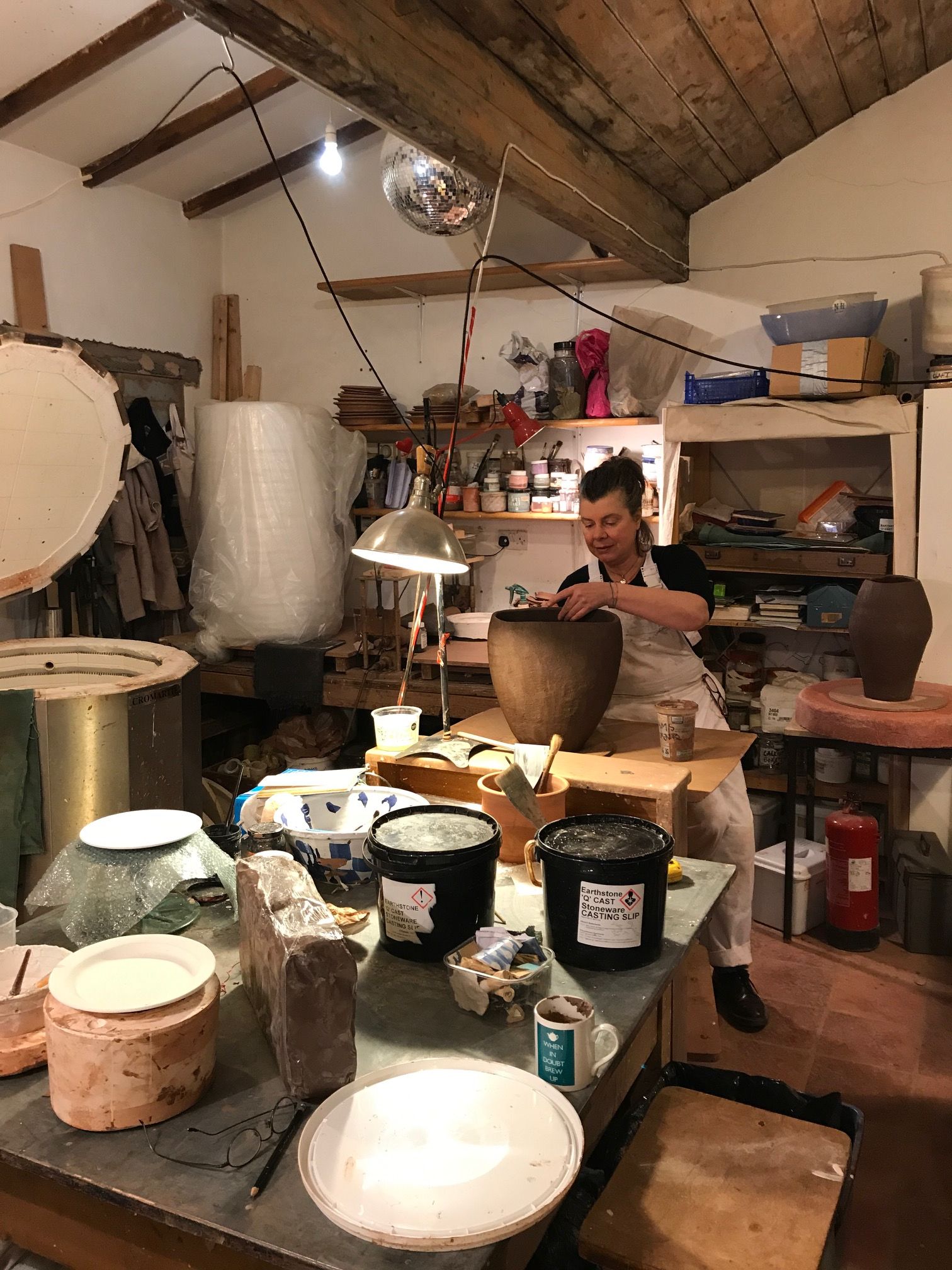
Sally was born in Cheshire, studied Product Design BA (Hons) at Leeds Polytechnic and has worked in various multi disciplinary studios between London, Glasgow, Milan and Manchester.
Royal College of Art Secret exhibtion annual contributor.
Her work includes drawing, life drawing, painting, print and site specific installation and film for projection: a combination of design ; sound; soundscape; text; poetry; word creation; still and moving images; blasts of colour and form. Just as Erik Satie likened his music to 'Furniture', not to be listened to as an orchestra, she calls her moving images 'Kinetic Wallpaper', the work to be viewed other than as tradition cinema film.
Drawing is a major and essential activity; it is slipping seamlessly into the zone of looking and mapping, feeling one's way around landscape while reading the colours and light.
Transcending trend, I think that if you set out to do a beautiful drawing or painting, the ego and desire to do something perfect do not help the creative process. You need to go on the journey as if you have walked up the hill for the first time. Being in the time and air, without wanting to do anyhting, give the space and confidence to start. You have to look and feel or you take away nothing. Except nothing and you'll get something.
Currently working in ceramics and creating large vessels with graffiti in scriffiti. Exploring Mythography, deconstructing myths, dreams, historical and contemporary facts and situations to create new stories, analogue, digital and dream states fused. Dream sequences, 'Our Daily News' feeds from tv and social media, images, film, sound and words, records in sketch books are conbined, stitched together and tinted blue to suggest blue prints. The ceramics are physical products derived from this process, an ancient art form of particles of clay like digital pixels, mixing things up.
This curious process of making objects from particles is magical, these products can exist for centuries. As our existence, art and culture today is gathered, harvested, homogenised and held id digital formats called 'clouds', there is a sense that should these massive clouds burst we run the riskn of being deleted from history. Sophisticated digital techonology systems born to engage in espionage, surveillance and battle are being used to manipulate the world and keep its people controlled, controlling and without personal control and to build something positive and expressive. Ultimately, the work is about human existence, comprehension and trancending barriers. However vast our differences, our similarities are always far greater.

